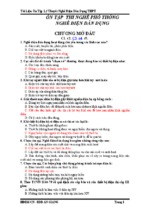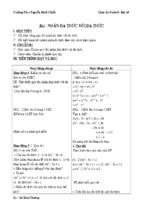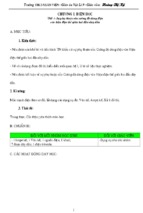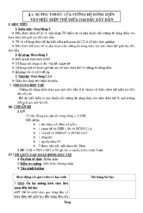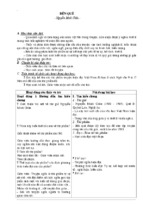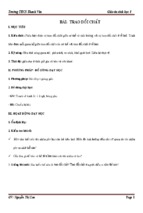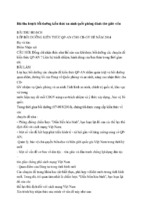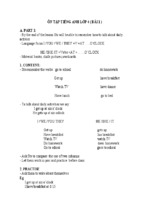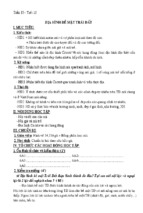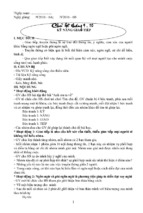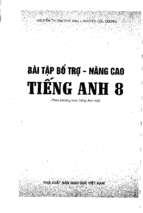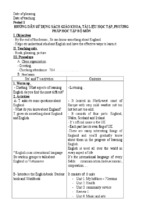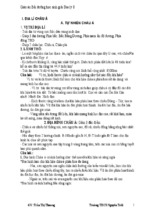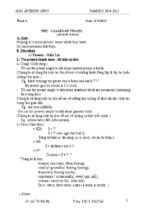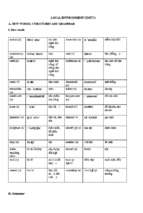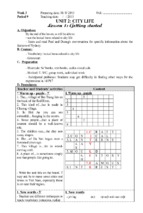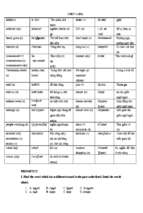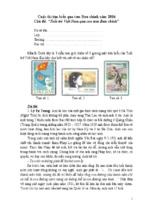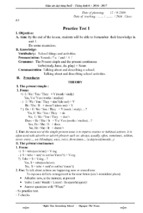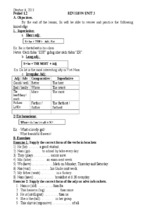BOOK MAP
ME AND MY FRIENDS
Unit 1 Hello
Competences
• Greeting and self-introduction
• Greeting and responding to
greeting
Page 6
Sentence Patterns
Hello/Hi. I’m + name.
How are you?
I’m fine, thanks/
thank you.
Unit 2 What’s your name?
Competences
• Asking and answering questions
about one’s name
• Asking and answering questions
about how to spell one’s name
Sentence Patterns
What’s your name?
My name’s + name.
How do you spell your
name?
Vocabulary
proper names
what’s, you, your,
name, how, do, spell
Phonics
Mai
Peter
Page 18
Sentence Patterns
This is + name.
Is this/that + name?
Yes, it is./No, it isn’t.
Unit 4 How old are you?
Competences
• Asking and answering
questions about someone
• Asking and answering
questions about someone’s age
Phonics
bye
hello
Page 12
Unit 3 This is Tony
Competences
• Introducing someone
• Asking and answering
questions about someone
Vocabulary
hi, hello, how, fine,
thanks, I’m, thank you,
Nice to meet you.
How are you?
Vocabulary
this/that, yes, no
Phonics
Tony
yes
Page 24
Sentence Patterns
Who’s that?
It’s + name.
How old are you?
I’m + age.
Vocabulary
who, how old
Unit 5 Are they your friends?
Page 30
Competences
• Introducing one’s friend and
responding to the introduction
• Asking and answering
questions about friends
Vocabulary
proper names
they, friend, are, aren’t
Phonics
five
six
Review 1
Sentence Patterns
This is my friend + name.
Are they your friends?
Yes, they are./No, they
aren’t.
Page 36
Phonics
that
yes
ME AND MY SCHOOL
Unit 6 Stand up!
Competences
• Giving and responding
to instructions
• Asking for and giving
permission
Page 40
Sentence Patterns
Stand up!
May I sit down?
Yes, you may./No, you
may not.
Vocabulary
stand up, sit down, come,
here, open, close, may,
go out, come in
Unit 7 That’s my school
Page 46
Competences
• Talking about school
facilities
• Asking and answering
questions about school
facilities
Vocabulary
school, library, classroom,
computer room,
playground, gym, big,
small, old, new, large
Phonics
come
down
Sentence Patterns
That’s the + school
facility.
Is the + school facility+
adjective?
Unit 8 This is my pen
Competences
• Identifying school things
• Talking about school
things
Phonics
gym
look
Page 52
Sentence Patterns
This/That is + school
thing.
These/Those are +
school things.
Vocabulary
Phonics
rubber, pencil case, school ruler
bag, notebook, pencil,
these
ruler, these, those
Unit 9 What colour is it?
Page 58
Competences
• Asking and answering
questions about school
things
• Asking and answering
questions about colours
Vocabulary
pencil sharpener, blue,
bookcase, black, yellow,
brown, green, orange
Sentence Patterns
Is this/that your + school
thing?
What colour is it?
It’s + colour.
What colour are they?
They’re + colour.
Unit 10 What do you do at break time?
Page 64
Competences
• Asking and answering
questions about break
time activities
• Expressing likes and
dislikes
Vocabulary
break time, badminton,
football, chess, basketball,
table tennis, play, like,
skating, hide-and-seek,
skipping, blind man’s bluff
Phonics
it
orange
Review 2
Glossary
Sentence Patterns
What do you do at break
time?
I play + game/sport.
Do you like + game/
sport?
Yes. I do./No, I don’t.
Page 70
Page 74
Phonics
blind
skating
BOOK MAP
ME AND MY FAMILY
Unit 11 This is my family
Competences
• Identifying family members
• Talking about the ages of family
members
Page 6
Sentence Patterns
Who’s that?
He’s/She’s my ...
How old is your ...?
He’s/She’s ...
Page 12
Unit 12 This is my house
Competences
• Identifying rooms in the house
• Asking and answering questions
about house facilities
Sentence Patterns
There’s a ...
It’s very nice!
Is there a ...?
Yes, there is./
No, there isn’t.
Vocabulary
Phonics
living room, kitchen, kitchen
bathroom, bedroom, bathroom
dining room, garden,
pond, yard, tree,
gate, fence, over
there
Page 18
Unit 13 Where’s my book?
Competences
• Asking and answering questions
about the location of things in
the house (singular)
• Asking and answering questions
about the location of things in
the house (plural)
Vocabulary
Phonics
family, father,
brother
mother,
grandmother
grandmother,
grandfather, brother,
sister, photo, man,
woman
Sentence Patterns
Where’s the ...?
It’s here/there.
Where are the ...?
They’re ...
Vocabulary
poster, bed, chair,
picture, coat, ball,
where, near, under,
behind, on
Unit 14 Are there any posters in the room?
Page 24
Competences
• Asking and answering questions
about things in the room
• Asking and answering questions
about quantity of things
Vocabulary
map, sofa,
wardrobe, fan,
cupboard, door,
mirror, window,
cup, count,
how many ...?
Phonics
chair
where
Sentence Patterns
Are there any ... in the
room?
Yes, there are./
No, there aren’t.
How many ... are there?
There are ...
Unit 15 Do you have any toys?
Page 30
Competences
• Identifying toys
• Asking and answering questions
about toys
Vocabulary
doll, teddy bear, car,
robot, ball, puzzle,
yo-yo, ship, plane,
kite, have, has
Phonics
fan
cup
Review 3
Sentence Patterns
Do you have ...?
Yes, I do./ No, I don’t.
Does he/she have ...?
Yes, he does./
No, he doesn’t.
Page 36
Phonics
plane
ship
ME AND THE WORLD AROUND
Unit 16 Do you have any pets?
Page 40
Competences
• Asking and answering
questions about pets
• Asking and answering
questions about the location
of pets
Vocabulary
Phonics
dog, cat, goldfish,
dog
parrot, rabbit, next to, parrot
in front of
Sentence Patterns
Do you have any ...?
Yes, I do. I have .../
No, I don’t. I have ...
Where are the cats?
They’re ...
Unit 17 What toys do you like?
Page 46
Competences
• Asking and answering
questions about toys
• Asking and answering
questions about quantity
Vocabulary
Phonics
ship, truck, kite, plane kite
ship
Sentence Patterns
What toys do you like?
I like ...
How many ... do you
have?
I have ...
Unit 18 What are you doing?
Page 52
Competences
• Asking and answering
questions about one’s action
in progress
• Asking and answering
questions about someone’s
action in progress
Vocabulary
read, cook, watch TV,
sing, dance, skate,
draw a picture, play
the piano, listen to
music
Sentence Patterns
What are you doing?
I’m ...
What’s he/she doing?
He’s/She’s ...
Phonics
reading
drawing
Unit 19 They’re in the park
Page 58
Competences
• Asking and answering
questions about activities in
the park
• Asking and answering
questions about the weather
in different places
Vocabulary
Phonics
cycle, skate, skip,
rainy
park, sunny, rainy,
skate
cloudy, windy, stormy,
snowy, weather
Sentence Patterns
What are they doing?
They’re ...
What’s the weather like?
It’s ...
Page 64
Unit 20 Where’s Sa Pa?
Competences
• Asking and answering
questions about places
• Asking and answering
questions about distance
Review 4
Glossary
Sentence Patterns
Where’s ...?
It’s in north Viet Nam.
Is .... near Ha Noi?
Yes, .../No, ...
Vocabulary
Ha Long Bay, north,
south, central, city,
near, far
Page 70
Page 74
Phonics
far
north
Tieng anh 3_SGV Macmillan Trang 6 sua1
CONTENTS
INTRODUCTION
TIẾNG ANH 3 is the first level of the three-level English textbook series for Vietnamese primary
school pupils learning English as a foreign language (EFL). The series follows the syllabus
approved by the Ministry of Education and Training in August 2010, and covers a systematic,
helical and topic-based development of the basic English language skills with emphasis on
listening and speaking for early levels.
UNIT COMPONENTS
Tiếng Anh 3, Student’s Book follows a sequence of presentation, practice and production to
develop English at a basic level through twenty topic-based units and four review units which
are richly illustrated and cross-curricular to provide pupils with easy-to-grasp and memorable
lessons and an enjoyable experience of learning English.
Each unit consists of three lessons on a topic related to one of the four themes: Me and My
Friends, Me and My School, Me and My Family and Me and the World Around, all of which are
designed to invoke a sense of familiarity. The activities are organized to provide training on
listening, speaking, reading as well as writing.
Each lesson provides material for two teaching periods (equal to seventy minutes). The lesson
contains concise and clear instructions for a wide range of activities arranged in a logical
progression, helping pupils to develop critical thinking, coordination and the ability to interact
with each other as they learn to understand and use English in both its spoken and written
forms.
A variety of extra activities including singing, chanting, TPR (total physical response) activities,
exciting games and a creative project at the end of each unit aim to facilitate the pupils' ability
to reproduce language in a fun and engaging way.
The Student’s Book creates a feeling of familiarity through the appearance of both Vietnamese
and foreign characters, such as Mai, Nam, Quan, Phong, Hoa, Linda, Peter, Mary and Tony.
The following is a brief description of how a unit is organized.
LESSON 1
Unit 1
4
1
5
2
3
This section presents key vocabulary and
structures in comic form to provide pupils with
reading, listening and oral practice.
This section provides for the controlled practice
of key vocabulary and grammar points. Pupils
may do choral and individual repetition of
the new vocabulary items and structures
supported by visual prompts before practising
speaking in pairs. Mechanical drills such as
repetition, substitution, question-and-answer
and transformation help pupils get familiar
with vocabulary and grammar structures
before they can reproduce the language in
wider context.
This section contains different situations in
which pupils are free to choose the best English
to use. There are illustrations and prompts to
encourage and guide the pupils as they interact
with their peers.
6
This section focuses on improving listening skills.
In some units pupils look at each pair of pictures
as they listen to the recording and show their
comprehension by putting a check ( ) in the
appropriate box. In other units, pupils number
the pictures while they are listening.
This section helps pupils use the vocabulary and
structures they have learnt. They are asked to fill
the gaps using visual and/or textual prompts.
This section contains a variety of ways in which
pupils can practise their English, through easyto-learn songs and chants, games or writing
about themselves. The songs/chants and
games help pupils practise the pronunciation
and rhythm of English through interaction and
cooperation with each other, while personal
writing allows them to express themselves in
simple sentences.
LESSON 2
4
1
5
2
3
The components of the first three activities in
Lesson 2, 1. Look, listen and repeat, 2. Point
and say, and 3. Let's talk, follow the same
pattern as in Lesson 1.
This section presents pupils with another
listening activity. Pupils look at the pictures
while they are listening and show their
comprehension by numbering the boxes in the
correct order or ticking "True" or "False".
6
This section aims to provide pupils with a simple
introduction to reading. Pupils show their
understanding of the text through filling the
gaps, matching text with pictures, answering
the questions or choosing the correct answers.
As with the final section in Lesson 1, this section
allows pupils to reproduce language through
singing, playing games or writing based on
visual and/or textual prompts.
LESSON 3
4
1
2
5
3
6
This section teaches the phonics which appear
frequently in the vocabulary or structures of the
unit, which young Vietnamese learners might
find problematic. Pupils get familiar with the
letters and sounds by listening and repeating.
This section helps pupils practise the phonics
they have learnt through a dictation task. Pupils
listen and fill the gaps.
This section contains a chant which uses the
structure(s) that pupils have learnt in Lessons
1 and 2. Like songs, chants are a helpful way of
teaching the rhythm of English, which is very
different from Vietnamese.
This section asks pupils to read and match
sentence halves, or questions with the
answers.
This section asks pupils to read and complete/
write sentences. It practises the main sentence
structures and/or vocabulary in the unit.
This section provides pupils with a creative
project to carry out independently or in
groups. The purpose of this section is to foster
cooperation and interaction among the class.
The following guidelines are for you to refer to when you first use this course book in your class.
Feel free to make any adjustments, as it is you who knows your particular teaching conditions
and what your pupils need to learn.
It is advisable to go through the contents of the lesson and the teaching notes before you go
into the classroom. This will help you familiarize yourself with the material and know what to
prepare for the lesson and what activities to conduct. For complicated activities such as games
and crossword puzzles you should consult the answer key before you teach.
You should do a warm-up activity at the start of every lesson. This is a short activity (only two to five
minutes) to draw pupils’ attention to the way in which English is used. This activity is a good way
to revise the previous lesson and to lead into the new one. The warm-up activities vary so you can
choose the most suitable one for you, e.g., you can get pupils to sing a song or play a non-verbal
game such as Simon says, Pelmanism, Bingo, Slap the board, Doing actions (Miming), or Charades
(guessing game).
It is advisable to vary the pairs of pupils, as shown in the diagrams below.
If the number of pupils is uneven, two pupils can share one role. Pupils should change their
partners regularly in order to change the working atmosphere.
You can get a “closed pair” (two pupils who sit next to each other) or an “open pair” (two pupils
who sit apart from each other in the classroom) to demonstrate an activity when necessary.
It is useful to divide pupils into groups of four or six according to some criteria, e.g., they are
friends, or they have the same birthdays or hobbies. Separate pupils who are disruptive and
encourage them by praising them when they cooperate.
Pair work (varied)
Group work of 4 or 6 (varied)
As pupils work in pairs or in groups, it is important to monitor the activity. Circulate and offer help
when necessary, but remember not to interfere with pupils’ work or correct all of their mistakes.
Let them work independently. Look at their ability to use English, as well as the problems or
difficulties they encounter during the activity. This will help you to prepare for revision work
later.
The activities should be timed and should be stopped before pupils lose interest or become
distracted. A routine should be established for halting an activity, such as putting your hand up
or giving two claps to signal the end of the activity.
Young learners love to be praised. When pupils perform an activity well, it is a good idea to praise
them (good, very good, great, well done, good job, etc). If a pupil cannot do a task, it is advisable to
encourage him/her (try again or have another try, not quite right, etc).
English should be used as much as possible in instructions and classroom management. This
reinforces the language the pupils are learning. In order to help pupils understand English, it is
useful to accompany your English with some gestures, or even Vietnamese when you introduce
something for the first time.
The instructions should be simple, clear and consistent to ensure pupils feel comfortable and
know what they are required to do. If pupils are confused, Vietnamese should be used to help
them understand and to make sure that they can perform the activities successfully.
Classroom language can be divided into receptive language and productive language. Pupils
can understand and respond to the receptive classroom language, and use the productive
classroom language when interacting with the teacher or with other pupils. The following
phrases are suggested instructions and expressions for use in your class teaching:
Receptive classroom language
Productive classroom language
Answer this / the question.
Ask a question.
Not yet. / I’ve done it.
Can I borrow your pen/ pencil/rubber?
Ask your neighbour /partner a question.
I think it’s …
Check your answers in pairs / groups.
I understand / I don’t understand.
I’m sorry. I can’t remember.
Close your books.
Copy it into your notebook / onto a piece /
onto a sheet of paper.
I’m sorry. I don’t know.
Correct / Not quite right / Wrong.
It’s my / your go / turn.
Draw a picture of …
I’ve got one wrong / two right.
Goodbye/Good night.
Me too.
Hello / Hi / Good morning / Good
afternoon / Good evening.
Please.
Is this/that right?
Receptive classroom language
Productive classroom language
Here it is / you are.
How do you spell it in English?
See you again / tomorrow / on Sunday / next
week.
I don’t think so.
Thank you / Thanks / Many thanks.
Listen to Linda / this / the dialogue / story /
dialogue between Nam and Mai.
What does it / this word / sentence mean?
Listen.
What’s number one / two / three / four?
What’s … in English?
Look at this / the board / picture(s) /
photo(s) / puppet(s).
Look.
Open your books.
Put up your hand.
Put your books away.
Quiet, please.
Read this / the word(s) / dialogue aloud.
Repeat after me, please.
Repeat, please.
Say it aloud.
Say it in English.
Say it in Vietnamese.
Say it.
In order to establish a classroom routine,
it is advisable to end the lesson in a way
which suits your teaching situation. If pupils
stay in the classroom for other classes, you
can give a signal to end the lesson such as
putting your hands up, clapping your hands
or tapping the board and saying It’s time to
stop, and get pupils to say Goodbye. See you
next time. when you leave the room.
If there is time, you can round off the lesson
with a song, rhyme, chant or a game that
pupils have learnt during the unit.
Sit down, please.
Spell it / the word(s).
Stand up, please.
Talk to your partner.
Try again.
Well done / Excellent / That’s right / That’s
not correct.
Work on your own.
Write a question.
Write a sentence of your own.
Write the answer to this / the question.
Write the answers to these / the questions.
Give a list of the focus words that you want
pupils to spell correctly. Select some pupils
to read the words aloud. Individually,
pupils look at each word and write it in
their notebooks. Pupils check their work in
pairs or groups.
Write the focus words on the board. Assign
one word to each pupil to copy down onto
a piece of paper. Collect the pieces of paper
and put them into a box. Erase the words
from the board. Have two teams take turns
to pick out a word and say it to a member
of the opposing team. This pupil must spell
the word correctly to score a point.
GAMES
Pupils work in pairs or in groups. They take
turns to dictate the focus words to each other
and check each other’s spelling. Another
method is to read the dictation and have
pupils listen and write. Then pupils work in
pairs to correct each other's work.
Prepare word cards for the focus words you
wish to check. Use two teams of four pupils
in the activity. Pupils from each team take
turns to come to the front of the class to
pick a card. They act out the word on the
card for their team, who have to guess the
word, in no more than five tries, to score a
point.
TPRs are actions done as commanded by
the teacher. They help pupils to associate
language with particular actions, which
enhances their understanding. This is a fun
way to help pupils understand the language
without putting too much emphasis, at this
early stage, on producing accurate English.
The procedure of using TPR as a teaching
technique is as follows:
Play the recording or read the text. Do the
actions associated with the text. Repeat
this step. Play the recording again or read
the text without the actions.
Ask pupils to work in groups to see how
much of the text they can remember.
Get pupils to say the text again without
performing the actions. Remind them of
the text, if necessary.
Get pupils to say the text with the actions.
(making sentences)
Make two groups, A and B, and have them
sit on chairs facing the rest of the class. Give
each group word cards which form different
sentences. Read the sentence, e.g. “This is
Lan.” If the pupils of group A have the word
cards containing "this", "is", "Lan" and the
full stop, they should stand up and move
quickly into a line to show the sentence in
the correct order. The members of group
B should remain seated. If they stand up
when you call group A's sentence, they will
lose the game, and vice versa.
Draw a word grid on the board and ask
pupils to copy it. Ask pupils to tell you the
words they have learnt in their lessons. List
them on the board. Each pupil chooses
nine words from the list to copy into their
grid. While they are doing this, copy each
word onto a piece of paper, put the pieces
of paper into a bag and mix them up. Select
pupils to pick out a piece of paper and call
out the word. Pupils with that word in their
grid can cross it out. Continue the game
until there is a pupil who has all the words
in their grid crossed out. That pupil is the
winner.
(miming)
This is a great game to review vocabulary.
You may need to do the actions with
pupils if they are shy at first. This will help
them to feel more comfortable. Divide the
class into two teams. Show the first team a
vocabulary item. They must act it out. If the
second team can guess the correct word,
they get a point. Switch the teams and let
the second team act out a word while the
first team guesses.
This is a fun and classic game. The teacher
(or a pupil) instructs the class to carry out
actions by saying, e.g. “Simon says touch
your nose" or “Simon says stamp your feet”. If
the teacher does not begin the instruction
with “Simon says …”, pupils should do
nothing. Have pupils write down four or five
commands (e.g. stand up, sit down, clap your
hands, stamp your feet, touch your ears, etc.)
they have learnt on a sheet of paper. Explain
the rules of the game and make sure pupils
understand that they must hear “Simon says
…” to perform the action. If not, they should
do nothing. You can play a trial game until
pupils understand. Pupils should use the
commands they have written down. Pupils
are eliminated if they do not perform the
correct action, or if they perform an action
when they have not heard “Simon says …”.
This is a memory game. Collect a group
of items of the same type, e.g. school
things. The items should be in the pupils’
vocabulary. Arrange the items on a desk
and cover them with a piece of cloth. Do
not let pupils see what is beneath the piece
of cloth. Have a brief discussion with the
class on what might be under the piece of
cloth, based on the shape and size of what
they can see, etc.
Divide the class into groups. Do not allow
pupils to write anything down. Explain that
you will show the class the items under the
piece of cloth for 60 seconds. After that,
each group must write down the name of
as many objects as they can remember.
Show the items for 60 seconds then cover
them with the piece of cloth. In their groups,
the pupils try to write down all the items.
Groups get a point for a correct guess and
another for a correct spelling. The group
with the most points wins the game.
Slap the board/word/number is a fun game
you can play with pupils that will help
reinforce the association between written
and spoken words.
The goal of the activity is that given a
spoken word, the pupil will quickly be able
to recognize the word’s written form or a
corresponding picture.
You will need these materials: a fly swatter
or a rolled-up newspaper, and a word or
picture wall (words written/pictures stuck
on a chalkboard or whiteboard).
Call a pupil up to the board. Call out a word
and wait for the pupil to slap the word or
picture on the board. It is a good idea to give
each pupil a time limit. Count the number of
words or pictures each pupil slaps correctly
within the time limit. The pupil with the
highest number is the winner.
Call a pupil up to the board. Call out a word
and wait for the pupil to slap the word or
picture on the board. It is a good idea to
give each pupil a time limit. Count the
number of words or pictures each pupil
slaps correctly within the time limit.
This is a card game testing concentration
in which all of the cards are laid face down
on the table. Each player in turn selects
two cards and turns them face up. If they
are matching (of the same shape/colour/
picture), that player wins the pair and plays
again. If the cards are not matching, they
are turned face down again and play passes
to the next player. The game ends when all
the cards are gone. The winner is the player
with the most pairs.
This game is a fun way for pupils to
practise their English while enjoying some
competition. On the board or on a sheet
of paper, draw a traditional tic-tac-toe
grid of 3x3 squares. In each square, write a
language item for pupils to complete, e.g.:
Do you like …? What lessons …? Why do you
…?, etc. Pupils should copy the grid to play
the game. They need one grid for each pair
of pupils (or teams).
Pupils play the game in pairs (or in teams
in larger classes). Ask them to complete
the language items. They score an X (or
O) for each sentence that is grammatically
correct.
The pupil or team who succeeds in placing
three respective Xs (or Os) in a horizontal,
vertical or diagonal row wins the game.
Choose one pupil to be the spy. The spy
looks around the room and selects an
object which he or she then whispers
to the teacher. (With very young pupils,
it might be better to have them tell the
teacher outside the classroom.) He or she
then announces to the class, “I spy with my
little eye something [colour].” Pupils then
take turns guessing the object the spy has
seen (e.g. “Is it the teacher’s shirt?”) Whoever
guesses correctly becomes the next spy.
Spot the differences (sometimes known as
the Photo hunt game) tests observation
and concentration skills by spotting the
differences that exist between two images
that seem to be identical. One image has
a few more things in it than the other one
does, or it is missing things that the other
one has.
To play the game, the teacher sets a certain
amount of time and delivers two pairs of
pictures either to each pupil, or they can
work in groups to find the differences.
Pupils should highlight each difference by
drawing a circle around it. The group that
finishes the game first will be the winner
and must then give an oral report of the
differences to the class.
There are many more language games that
you can find on the Internet or on YouTube.
Simply search for ESL or EFL (English as a second
language, English as a foreign language) games
or video clips.
It is very important to inform the class of
the objectives of the lesson because pupils
can only perform well if they understand
what is expected. Say the unit title a few
times and check pupils' comprehension of
the title, using simple and easy questions,
or even Vietnamese for the first few classes.
Using Vietnamese makes what you mean
clear, but later on, increase your use of
English, and only give a short explanation
in Vietnamese if necessary.
Hold up the Student’s Book, point to each
of the pictures in the story in turn and
briefly discuss with the class what they
think is happening in each picture. Elicit the
answers by asking: What can you see in the
picture? Who is the speaker? or Who are the
speakers? Do you understand what he/she is
saying? or Do you understand what they are
saying? What does he/she want? or What do
they want? What is he/she doing? or What are
they doing? etc. Encourage pupils to guess
the meaning of the key vocabulary, using
the pictures or flashcards. You can teach
the key terms if they are abstract nouns or
difficult notions for pupils to guess from
the visual prompts.
Call on several open pairs to act out the
dialogue.
Follow-up activity: let pupils read the story
in Look, listen and repeat to themselves. Ask
different individuals to come to the front
of the class to act out the story either with
or without their books, depending on how
confident they feel.
Play the recording for pupils to listen and
follow silently in their books.
Play it again for pupils to do choral and
individual repetition until they feel
confident.
Inform the class of the objectives of this
section: pupils are going to learn the
pronunciation of new words and sentences.
Give a few moments for pupils to look at the
pictures and read the text in silence. Point to
each word and say it slowly and clearly. Check
pupils’ comprehension of the vocabulary
and give explanations if necessary using
flashcards and gestures. Get pupils to do
choral repetition, using the flashcards or
picture cards as prompts. When pupils are
confident enough, get different individuals
to take turns saying the sentences or asking
and answering the questions.
Write the gapped sentences on the board
and elicit the words to fill the gaps. Point
to each sentence and say it slowly and
clearly before having pupils do choral and
individual repetition or drilling, using the
words and pictures as prompts.
If the task is drilling a question and answer,
drill the answer first. When you have finished
drilling the answer, drill the question in
the same procedure. Finally, combine the
question and answer together. Do choral
and individual drilling respectively.
Get pupils to interact in pairs. Have them
point to each picture, asking and answering
respectively. Go around offering help with
pronunciation, if necessary.
Use flashcards or pictures to revise the
vocabulary and structures in the previous
section. Pupils can look at the Student’s
Book and imagine they are the characters
in the story to ask and answer the questions
provided or they can also role-play the focus
language, using real facts and people.
Elicit the language to fill the gapped
sentences. Write the complete sentences
on the board and have pupils repeat them
a few times.
Encourage pupils to write their own
exchanges and call some open pairs to act
out the dialogue in front of the class.
Inform the class of the objective of this
activity: they are going to listen and
tick the appropriate box to show their
comprehension.
Give pupils a few moments to look at
the pictures. Draw pupils’ attention to
specific details in the picture, and check
comprehension by saying: Describe what
you see in the picture or What can you see in
the picture? What do you suppose this speaker
(boy/girl/person) is saying? Remind pupils
not to worry if they do not understand
every word, and that they should associate
what they are hearing with the pictures.
Play the recording all the way through for
pupils to listen to as they are looking at the
pictures. Play it again for them to check the
appropriate box. Play the recording the
third time for pupils to check their answers.
Have pupils swap their answers before
calling different individuals to report
theirs. If there are more than three pupils
with incorrect answers, ask these pupils to
explain how they selected the answers (in
Vietnamese if they cannot express their
ideas in English), and explain the correct
answer to them.
The procedure is the same as Listen and
tick. However, here the pupils’ task is either
numbering the pictures in the order in
which they have heard them, or filling the
gapped sentences.
easy questions (See Look, listen and repeat).
Have pupils do the task independently.
Move around offering help.
Have pupils swap and check their answers
before checking as a class. Give explanations
if there is more than one pupil making the
same mistake.
(Phonics).
Inform the class of the objective of the
activity: pupils are going to practise saying
the sounds of the focus letters in words and
sentences. Hold the phonics flashcards or
point to the letters in red in the Student's
Book in such a way that the whole class can
see. Pronounce the letters slowly and clearly
a few times before saying the words.
Do choral and individual repetition until
pupils feel confident to say the words by
themselves.
Inform the class of the objective of this
section: they are going to read the texts and
show their comprehension by matching the
texts with the pictures, filling the gapped
sentences or answering the questions.
Read or play the recording and let pupils
read the text in silence. Check their
comprehension and give the meaning of
any new vocabulary, if necessary.
Set time for pupils to read in silence and do
the task.
Get pupils to swap and check their answers
before checking as a class.
Draw pupils' attention to the sentences.
Check their comprehension before reading
each sentence clearly. Have pupils do choral
and individual repetition, using the word
cards as prompts.
Inform pupils of the objective of this activity:
this is a dictation. Give a few seconds for
pupils to read the gapped sentences in
silence.
Read the sentences slowly, pausing regularly
to allow time for the pupils to write.
Have pupils swap their answers before
checking as a class.
Inform pupils of the objective of this activity:
they are going to write words or phrases
using the prompts (texts or pictures). Show
pupils how to carry out the task.
Give a few seconds for pupils to look at the
pictures or read the text in silence. Then
check comprehension by asking simple and
Draw pupils’ attention to capital letters and
the punctuation in a sentence (comma, full
stop, question mark, etc.).
Chants and songs are engaging and help
pupils practise the pronunciation and
rhythm of English in a fun way. The songs
and chants in Tiếng Anh 3 are a component
of every unit. You can learn them first at
home before you teach.
Get pupils to read the lyrics or the texts in
silence. Check their comprehension. Explain
new vocabulary if necessary.
Sing or play the recording all the way
through a few times. Have pupils repeat
each line of the lyrics or the chant a few
times before having them chant or sing
along until they feel confident to sing or
chant without the book.
When pupils can sing or chant with
confidence, get them to do the actions
(mime) as they are singing or chanting,
as this will help reinforce the meaning of
the language and make the activity more
enjoyable.
(a game).
There are different kinds of games in Tiếng
Anh 3 such as Line-up (making sentences),
Bingo, Simon says, Kim’s game (memory
game), Pelmanism (concentration game)
and Charades (miming) (See Activities Bank,
Games).
Make sure pupils know the name of the
game and understand clearly how to play it
by demonstrating the game in front of the
class with a few pupils, and have a practice
round before starting the game.
Team games are more competitive and
more exciting. Keep the score on the board
and encourage a spirit of cooperation.
Projects occur at the end of most units.
Through creativity, the projects help pupils
to reinforce what they have learnt and
foster cooperation and interaction.
If there is not enough class time, teachers
can give the project as homework.
It is very important to end the unit with a
song, chant, or a game because it makes
learning English a fun and memorable
experience for pupils.
Unit 1
1
2
3
- Xem thêm -

